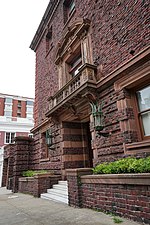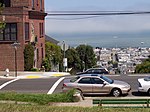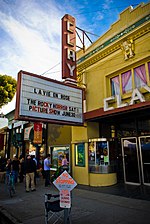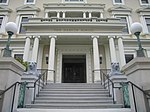Calvary Presbyterian Church (San Francisco)
1900s architecture in the United StatesCalifornia church stubsChurches completed in 1901Churches in San FranciscoChurches on the National Register of Historic Places in California ... and 6 more
National Register of Historic Places in San FranciscoNeoclassical architecture in CaliforniaSan Francisco Bay Area Registered Historic Place stubsSan Francisco Designated LandmarksSan Francisco building and structure stubsSan Francisco geography stubs

Calvary Presbyterian Church is a historic Presbyterian church in San Francisco, California located in Pacific Heights at the corner of Fillmore Street and Jackson Street. The present building was built in 1901 and features Late 19th And 20th Century Revival architecture and an Edwardian style. The building was added to the National Register of Historic Places in 1978.
Excerpt from the Wikipedia article Calvary Presbyterian Church (San Francisco) (License: CC BY-SA 3.0, Authors, Images).Calvary Presbyterian Church (San Francisco)
Jackson Street, San Francisco
Geographical coordinates (GPS) Address Nearby Places Show on map
Geographical coordinates (GPS)
| Latitude | Longitude |
|---|---|
| N 37.792777777778 ° | E -122.43361111111 ° |
Address
Pacific Heights School
Jackson Street 2340;2360
94123 San Francisco
California, United States
Open on Google Maps









